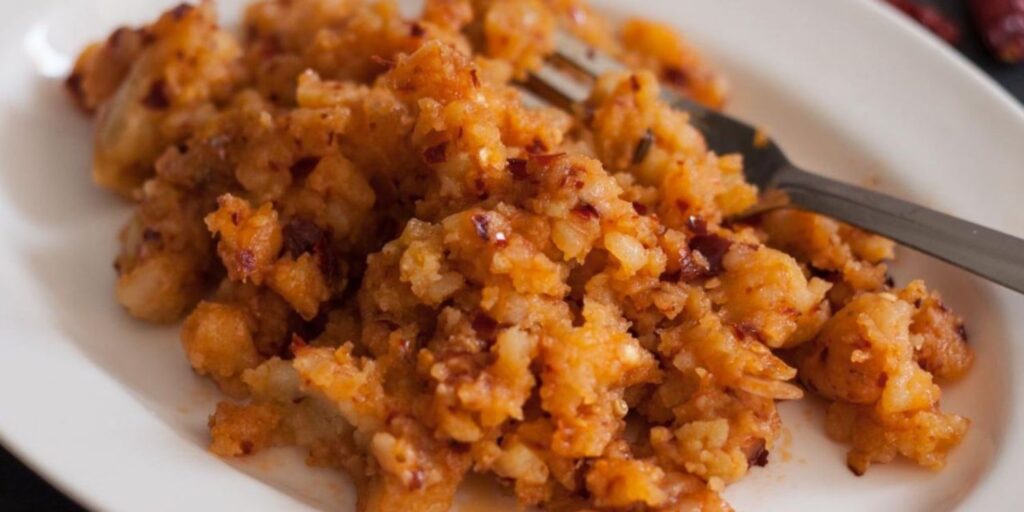Famous Food of Manipur boasts a unique and flavorful cuisine, distinguishing it amidst India’s diverse culinary panorama.
Famous for its rich cultural heritage, this northeastern state boasts an array of dishes that tantalize the taste buds and reflect the region’s diverse influences.
Among the plethora of culinary delights, the famous food of Manipur holds a special place, captivating food enthusiasts with its exquisite flavors and traditional cooking methods.
The famous food of Manipur is a delightful amalgamation of indigenous ingredients, aromatic herbs, and age-old cooking techniques passed down through generations.
From savory delicacies like Eromba, a fiery fish stew infused with local herbs and spices, to the iconic Kangshoi, a hearty vegetable broth bursting with flavors, every dish tells a story of the famous food of Manipur.
Additionally, the state’s love affair with rice is evident in its various forms, from the staple rice-based dishes like Chak-hao kheer, a delectable black rice pudding, to the mouthwatering Singju, a refreshing salad made with crispy vegetables and fermented fish.
With its cultural heritage and diverse flavors, the famous food of Manipur serves as a testament to the region’s culinary ingenuity and continues to captivate food enthusiasts worldwide.
1. Manipuri Eromba
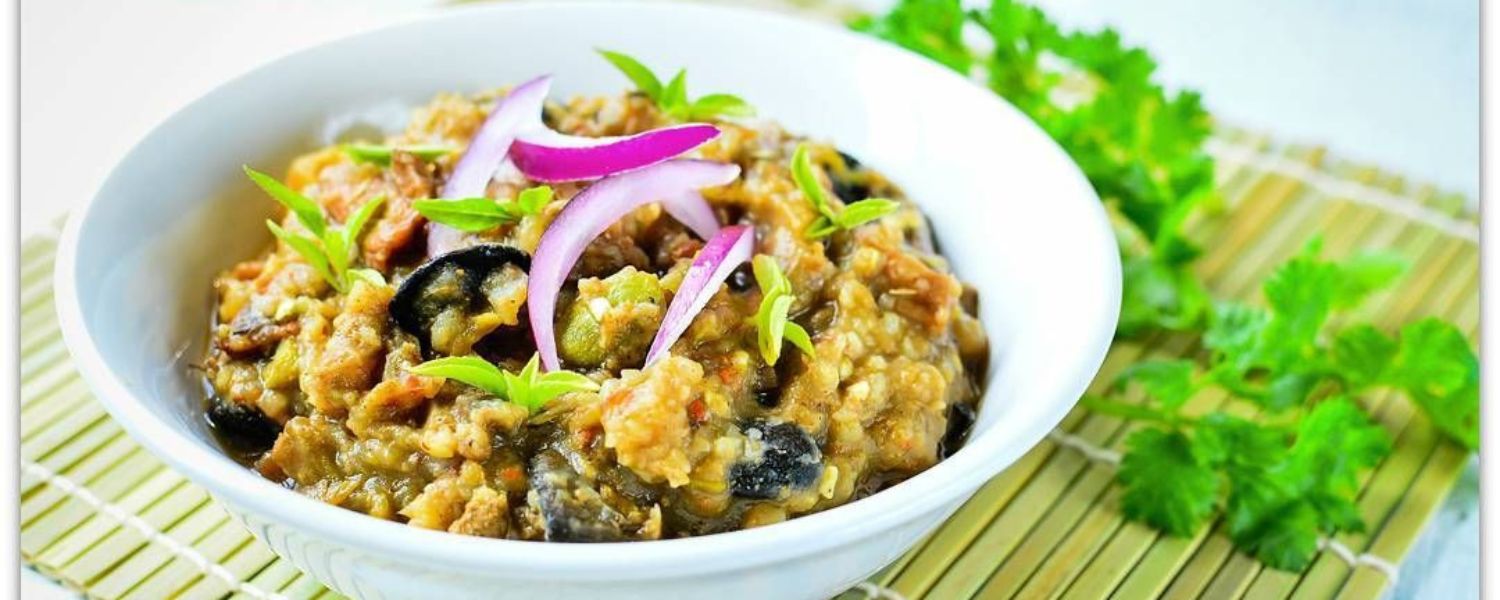
Discover the rich flavors of the famous food of Manipur with the iconic dish Manipuri Eromba.
Celebrated as a culinary treasure among the Meiteis community, Eromba embodies the essence of the famous food of Manipur.
This beloved dish features fermented fried fish, known as ngari, as its star ingredient.
Ngari infuses the dish with a unique umami flavor that is both distinctive and irresistible. To create Eromba, ngari is delicately mashed with potatoes, fiery king chilies, and seasonal local vegetables.
The result is a harmonious blend of flavors and textures that tantalize the taste buds. Eromba’s popularity extends far beyond Manipur, captivating food enthusiasts with its authentic taste and cultural significance.
Whether enjoyed as a comforting meal at home or savored at festive gatherings, Manipuri Eromba offers a culinary experience that is as heartwarming as it is delicious.
Embrace the culinary heritage of the famous food of Manipur and indulge in the flavors of Eromba for a truly memorable dining experience.
2. Singju
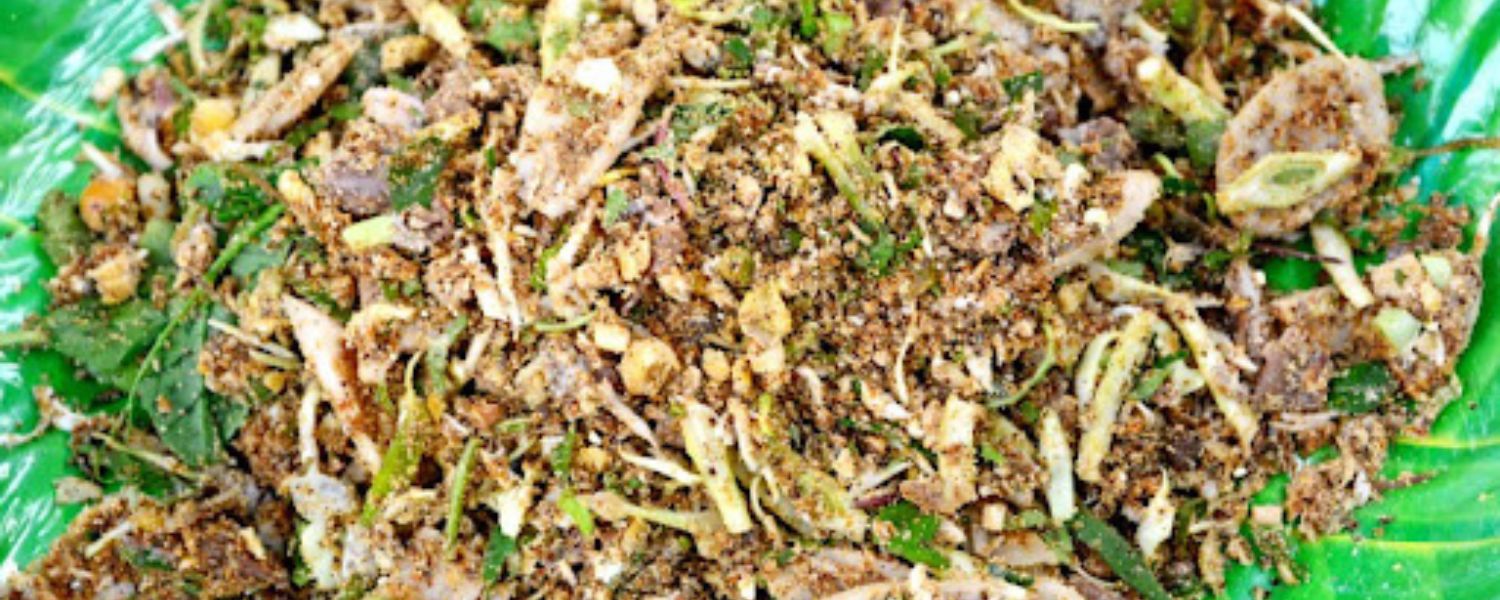
Singju, a renowned dish of Manipur’s famous food, reflects the region’s vibrant culinary heritage.
Rooted in the Meitei culture, this delectable offering has transcended ethnic boundaries, finding favor among various communities within the famous food of Manipur and even neighboring states of Northeast India.
Primarily served as a zesty side dish, Singju is a delightful snack, perfect for leisurely afternoons or evenings. What sets Singju apart is its harmonious blend of flavors and textures.
It typically comprises an assortment of fresh vegetables like cabbage, lotus stem, and banana flower, tossed with roasted sesame seeds, chilly flakes, and fermented fish sauce.
This medley of ingredients tantalizes the taste buds and provides a burst of nutrition.
Whether enjoyed alongside a meal or savored on its own, Singju remains a beloved culinary treasure, embodying the rich culinary tapestry of Manipur.
3. Chamthong or Kangshoi
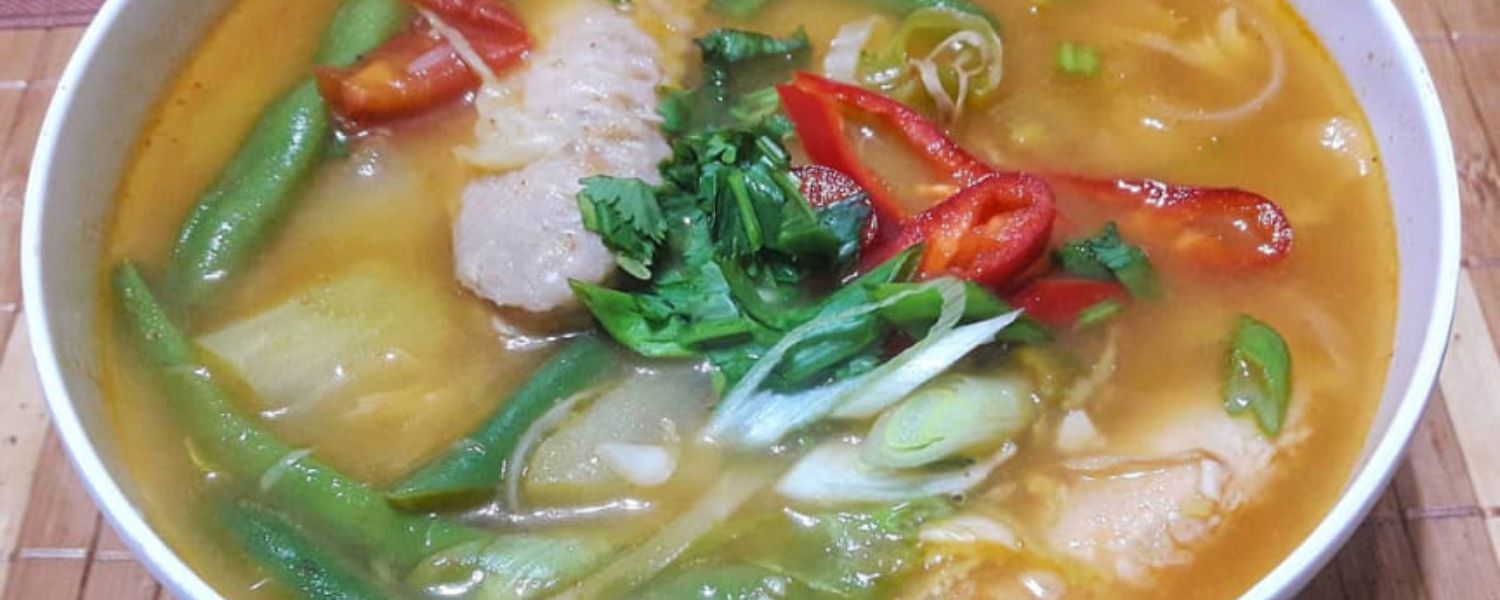
In the vibrant culinary landscape of Manipur, one dish stands out as a beloved emblem of its rich flavors: Chamthong or Kangshoi.
This traditional delicacy is a hearty stew crafted from various seasonal vegetables, lending it a dynamic and ever-changing profile throughout the year.
Prepared by simmering coarsely chopped onions or spring onions with Mario (a variety of aromatic herbs like both yennam nakuppi and napakpi), ginger, gari (fermented fish), and salt, Chamthong embodies the essence of the famous food of Manipur.
Its soupy consistency makes it a comforting and nourishing dish, perfectly paired with a serving of rice.
What sets Chamthong apart is its versatility, allowing for variations such as adding dried fish or fried fish pieces as a flavorful topping.
This iconic dish not only tantalizes the taste buds but also reflects Manipur’s cultural heritage and culinary ingenuity, making it a must-try for anyone exploring the region’s gastronomic treasures.
4. Paknam
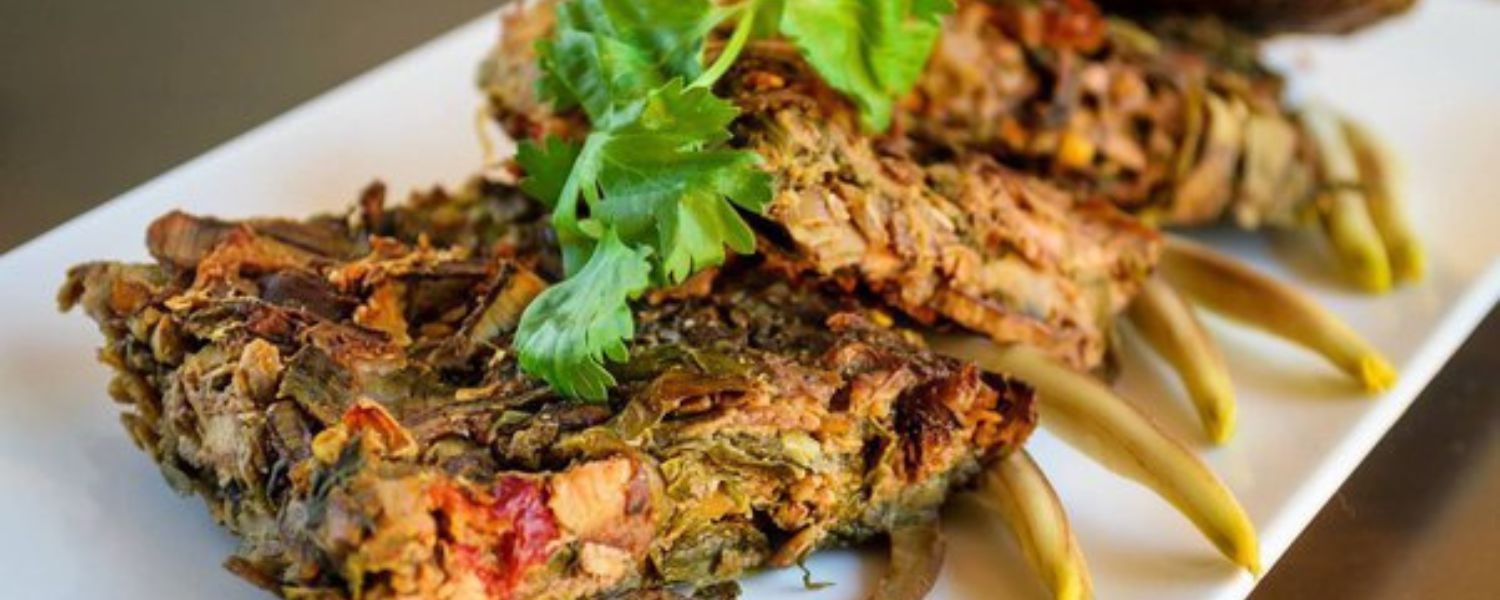
Discover the flavorful delight of Paknam, a beloved delicacy hailing from the vibrant state of Manipur.
This delectable dish, often called a “Manipuri pizza,” is a steamed marvel crafted from fresh vegetables, succulent fish, or tender meats.
Boasting a blend of traditional flavors and wholesome ingredients, Paknam tantalizes the taste buds and offers a nutritious dining experience.
Since immemorial, Paknam has been cherished in Manipuri cuisine, gracing dining tables as a favored side dish. Its popularity stems from its taste and cultural significance within the region.
Every bite of Paknam offers a symphony of flavors, showcasing the culinary expertise of Manipuri cooks.
Whether you’re a seasoned enthusiast of Manipuri cuisine or a curious food adventurer, indulging in Paknam promises a memorable gastronomic journey.
So, dive into the rich tapestry of flavors that Paknam offers and savor the essence of Manipur’s culinary heritage.
5. Ngari
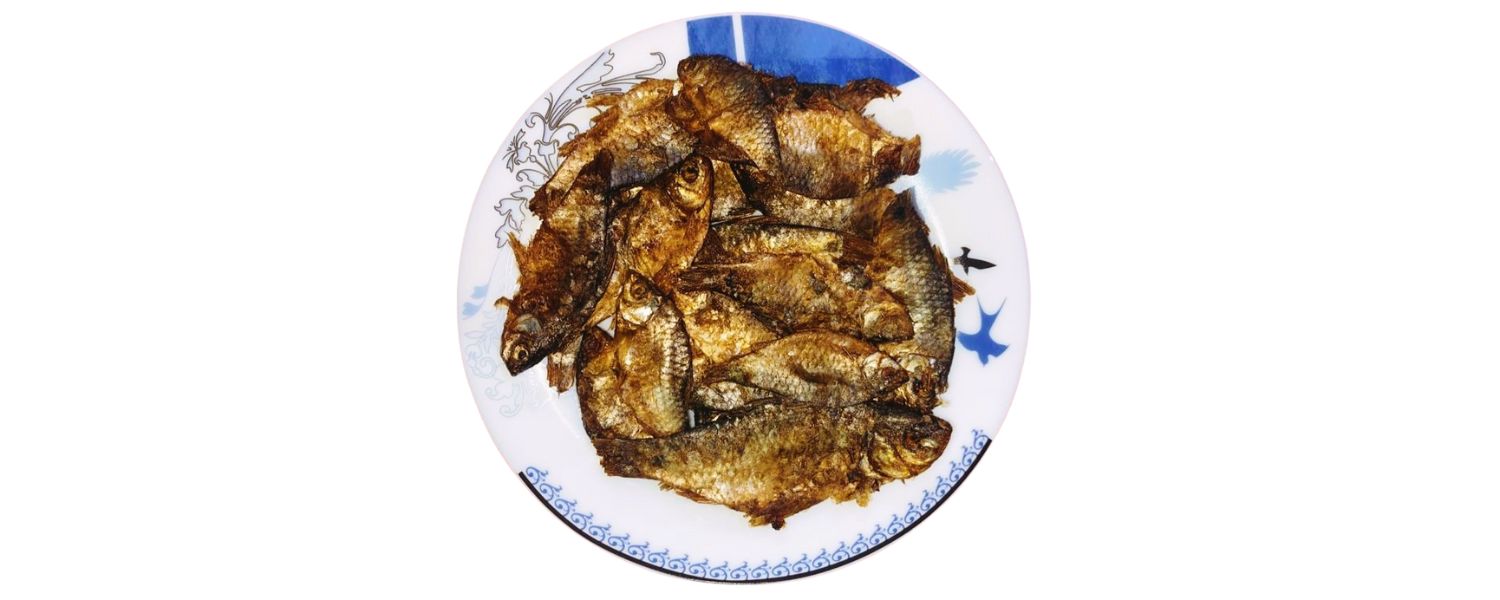
Ngari, a beloved delicacy of Manipur, holds a special place in the hearts and palates of its people. This fermented fish product is deeply ingrained in the region’s culinary traditions.
The name “Ngari” reflects its origin and preparation method, with ‘nga’ meaning fish and ‘ri’ referring to the fermentation process in the Meitei language.
Prepared by fermenting small freshwater fish like mudfish or tengpok, Ngari boasts an intense aroma and a distinct umami flavor.
The fish undergoes a meticulous fermentation process, typically packed in earthen pots with salt and kept for several months to develop its characteristic taste.
Ngari finds its way into various traditional and famous food of Manipur, adding depth and richness to stews, curries, and chutneys.
Its unique taste profile makes it a staple ingredient in Manipuri cuisine, cherished for its intense flavor and cultural significance.
Ngari encapsulates the essence of Manipuri gastronomy, offering a sensory experience that celebrates the region’s culinary heritage.
6. Chak-hao Kheer
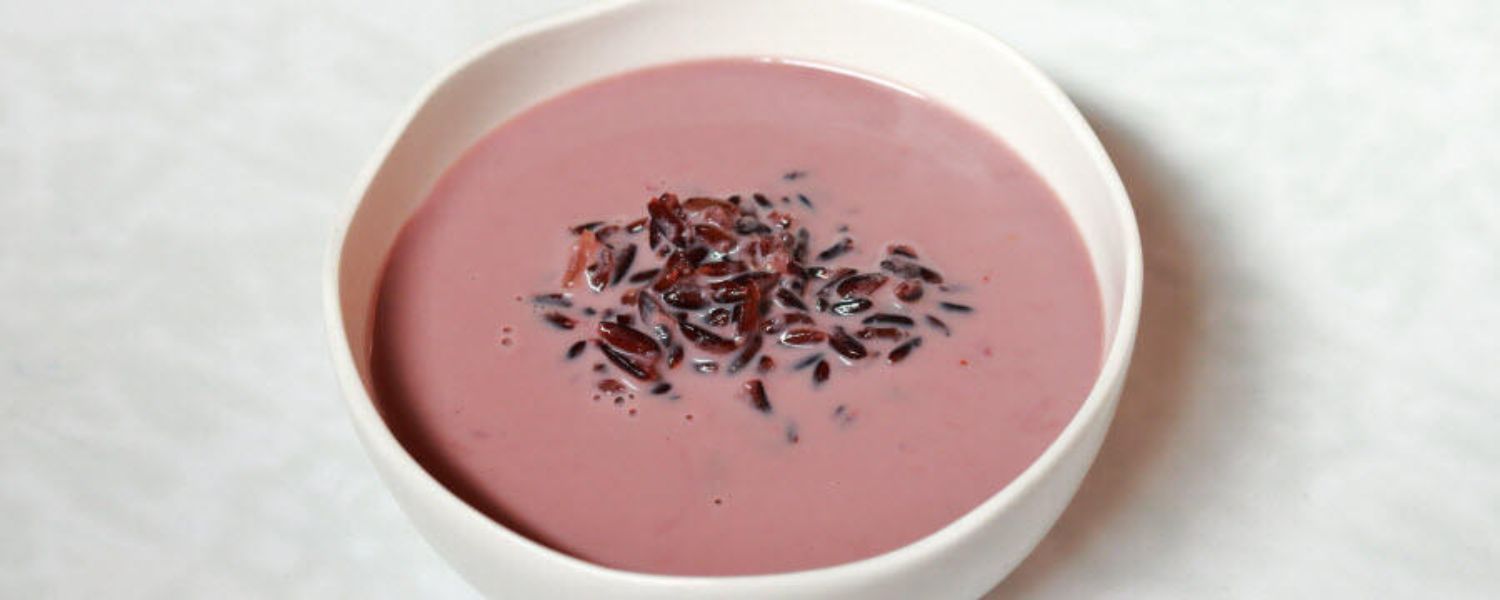
Chak-hao Kheer, a renowned delicacy from Manipur, is a divine treat for the taste buds.
This traditional dish is crafted from the exquisite forbidden black rice, locally known as Chak-hao, and sweetened with sugar, resulting in a sumptuous black rice pudding.
The unique black hue of the rice infuses the kheer with a mesmerizing visual appeal, while its distinct nutty flavor adds depth to every spoonful.
Prepared with care and skill, this dessert embodies the rich culinary heritage of Manipur.
Making chak-hao kheer involves simmering the black rice in milk until it reaches a creamy side, infused with the aroma of cardamom, and is sometimes garnished with nuts like almonds or cashews for added texture and flavor.
Whether served warm or chilled, this indulgent treat is beloved by locals and revered by visitors for its unparalleled taste and cultural significance.
Chak-hao Kheer is a testament to Manipur’s culinary prowess, offering a delightful glimpse into the region’s vibrant gastronomic tapestry.
7. Kabok
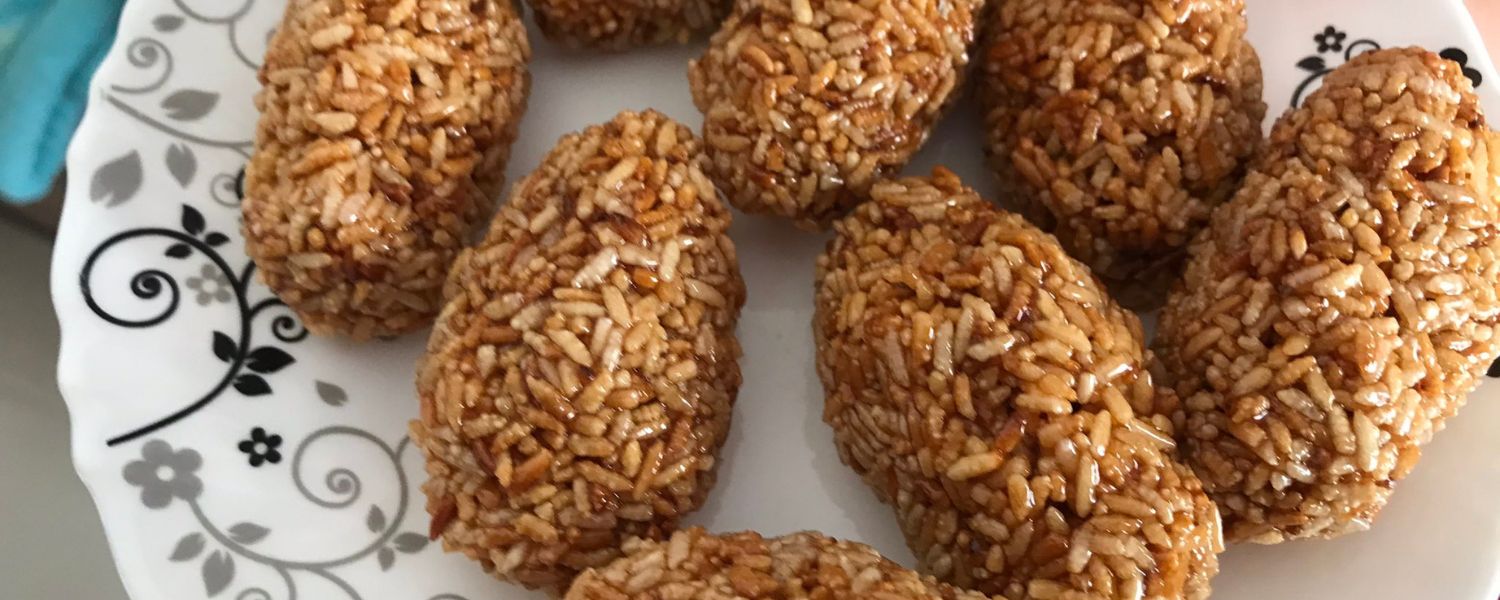
Discover the flavorful essence of Manipur through its renowned culinary delight, Kabok. Embracing the spirit of Meitei Manipuri ethnicity, Kabok, also known as Kapok, is a beloved food item cherished across the state.
Comprising a delightful blend of puffed rice, roasted rice, and molasses, Kabok tantalizes taste buds with its unique texture and sweet undertones.
This beloved snack comes in various flavors, including the alluring notes of honey and the rich essence of sugarcane, catering to diverse palates.
Immensely popular among Manipuri communities, Kabok is more than just a snack; it’s a cultural emblem cherished in everyday life and festive celebrations alike.
Its simplicity in ingredients and complexity in flavors encapsulate the essence of Manipuri cuisine, inviting food enthusiasts on a culinary journey through the vibrant landscapes of Manipur.
Delight in every crunchy bite of Kabok and experience the rich heritage and flavors of this enchanting Indian state.
8. Yongchak Iromba
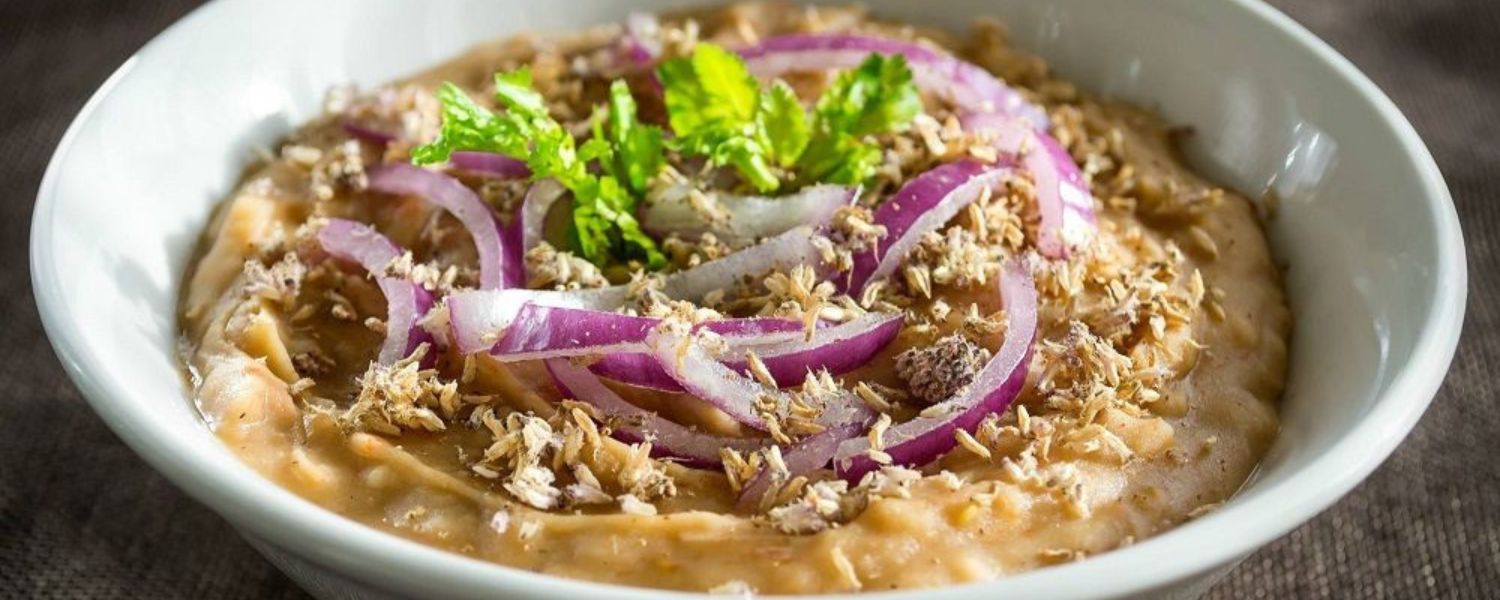
Yongchak Iromba, a famous food of Manipur, is a flavorful delicacy that holds a special place in the hearts of locals and tourists.
This iconic dish is a vibrant medley of flavors and textures, showcasing the rich culinary heritage of Manipuri cuisine.
The star ingredient, Yongchak, also known as tree beans or stink beans, lends a unique aroma and taste to the dish, setting it apart from other regional specialties.
To prepare Yongchak Iromba, the fermented tree beans are cooked with various ingredients such as potatoes, onions, tomatoes, chili peppers, and herbs, creating a harmonious blend of spicy, tangy, and earthy flavors.
The dish is typically enjoyed with steamed rice, enhancing its wholesome and satisfying appeal.
Beyond its delicious taste, Yongchak Iromba also holds cultural significance, often served during festive occasions and family gatherings, symbolizing unity and togetherness.
Yongchak Iromba is a must-try dish for those exploring Manipuri cuisine, offering a delightful culinary adventure that tantalizes the taste buds and leaves a lasting impression of the region’s gastronomic diversity.
9. Chakhao Amubi
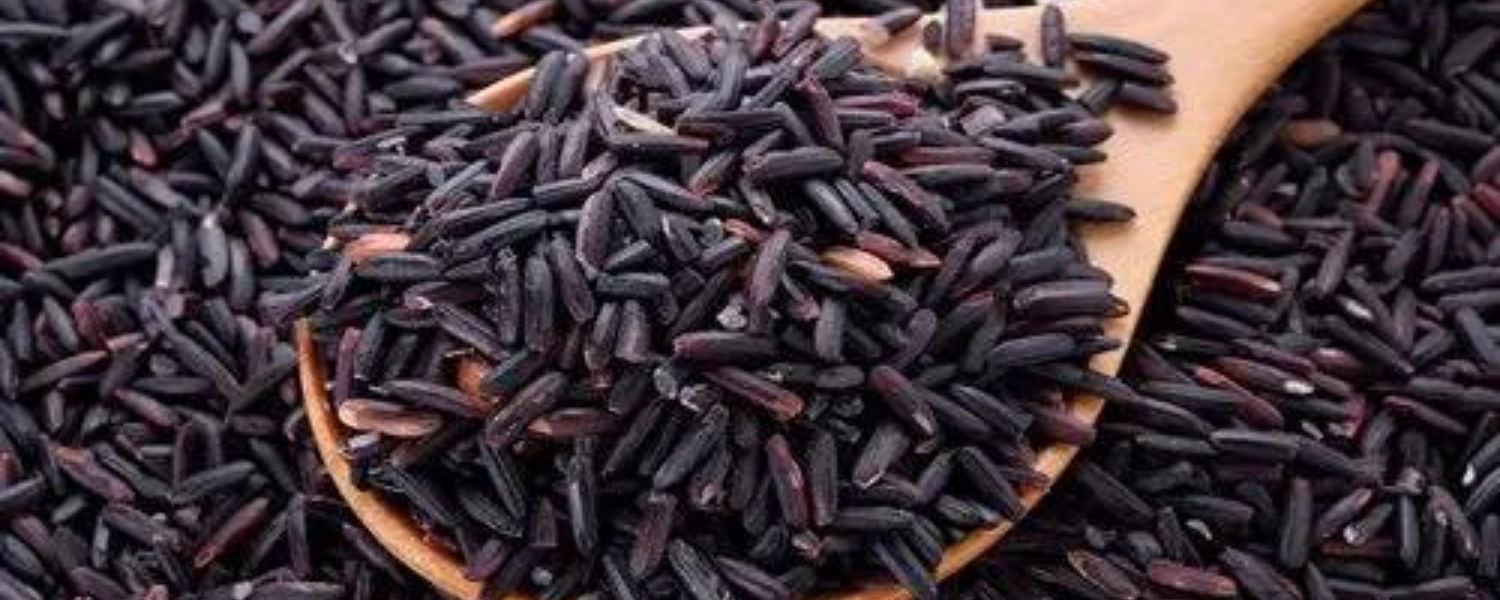
Chakhao Amubi, a cherished dish from Manipur, is a testament to the region’s culinary heritage.
This delicacy revolves around black rice, locally known as chakhao, which imparts a unique flavor and distinct purple hue.
Prepared by boiling black rice with various indigenous ingredients such as ginger, garlic, and green peas, Chakhao Amubi is a delightful blend of textures and flavors.
The dish often incorporates seasonal vegetables and aromatic spices like turmeric and cumin, enhancing its taste profile.
Chakhao Amubi holds significance beyond its culinary appeal, as black rice is revered for its nutritional benefits and cultural symbolism.
It contains antioxidants and important nutrients, making it a wholesome choice for health-conscious consumers.
Served hot and accompanied by traditional side dishes like smoked meat or fish, Chakhao Amubi embodies the essence of Manipuri cuisine, reflecting the region’s vibrant culture and flavorsome traditions.
Its popularity transcends borders, captivating the palates of food enthusiasts worldwide.
10. Alu Kangmet
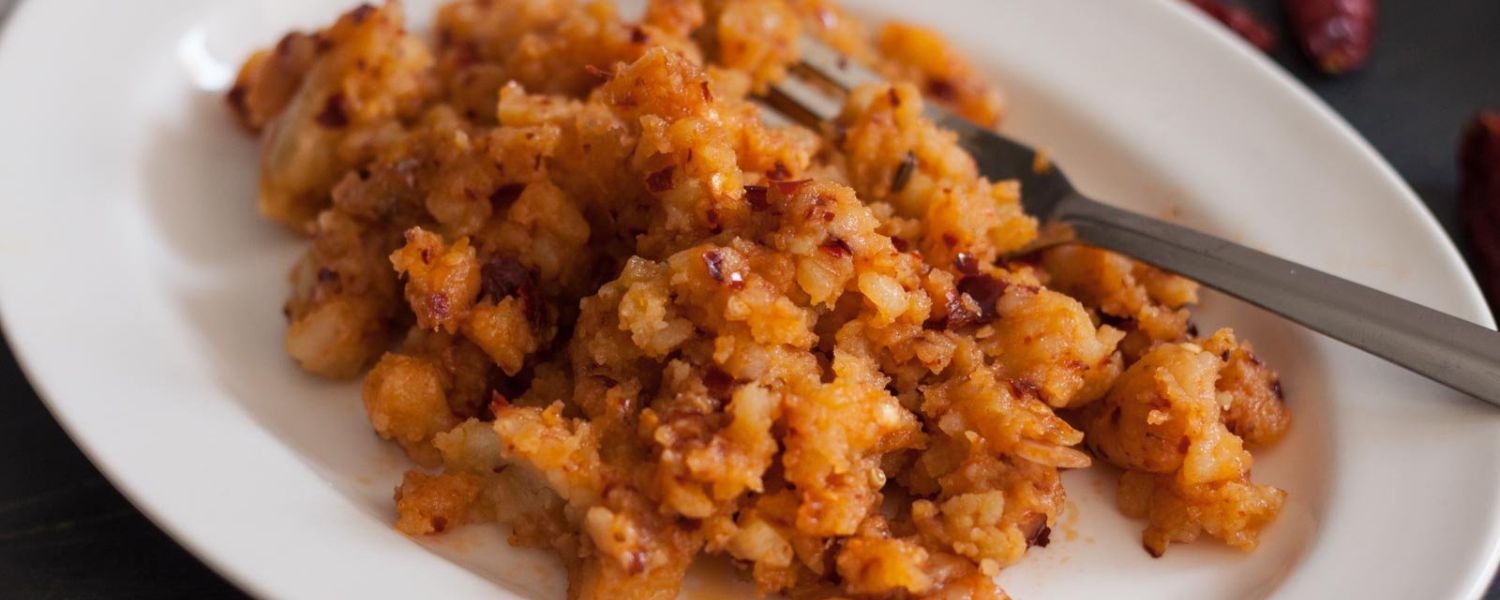
Alu Kangmet is a famous Manipur dish known for its simple yet delightful flavors. As one of the most famous foods of Manipur, Alu Kangmet showcases the region’s culinary expertise.
This dish primarily consists of mashed potatoes, locally called ‘alu,’ mixed with spices and herbs. The potatoes are boiled, mashed, and then seasoned with mustard oil, salt, and green chilies to add a spicy kick.
Alu Kangmet is often served alongside smoked or dried fish, enhancing its taste with a smoky aroma.
People cherish this dish not only for its delicious taste but also for its cultural significance, representing Manipur’s traditional cuisine.
Whether enjoyed as a side dish or a main course, Alu Kangmet remains a staple in Manipuri households, offering flavors that satisfy both the palate and the soul.
11. Ooti
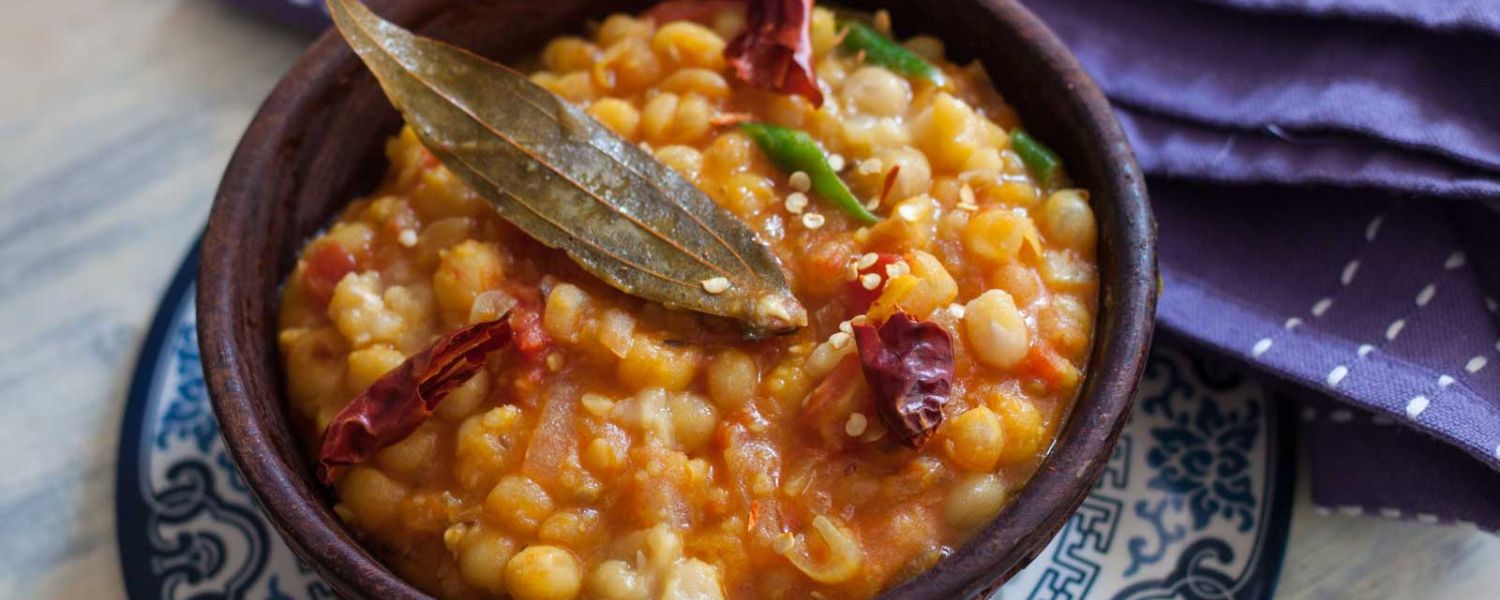
Manipur’s culinary heritage with the famed delicacy, Manipuri Mangal Ooti. This cherished dish holds a special place in the hearts of Manipuris, particularly during the joyous Kang festival.
Mangal Ooti is a simple yet delicious side dish, often enjoyed during breakfast or dinner.
Its preparation involves cooking peas in a distinctive blend of soda and mustard oil tadka, imparting a unique flavor that tantalizes the taste buds.
Served alongside various Indian breads, this dish adds flavor to any meal.
The traditional methods and authentic ingredients used in crafting Mangal Ooti encapsulate the essence of Manipuri cuisine, making it a must-try for anyone eager to explore the rich gastronomic tapestry of this northeastern state.
Indulge in the warmth and flavors of Manipuri Mangal Ooti, a culinary gem that embodies the spirit of Manipur’s culinary traditions.
12. Morok Metpa
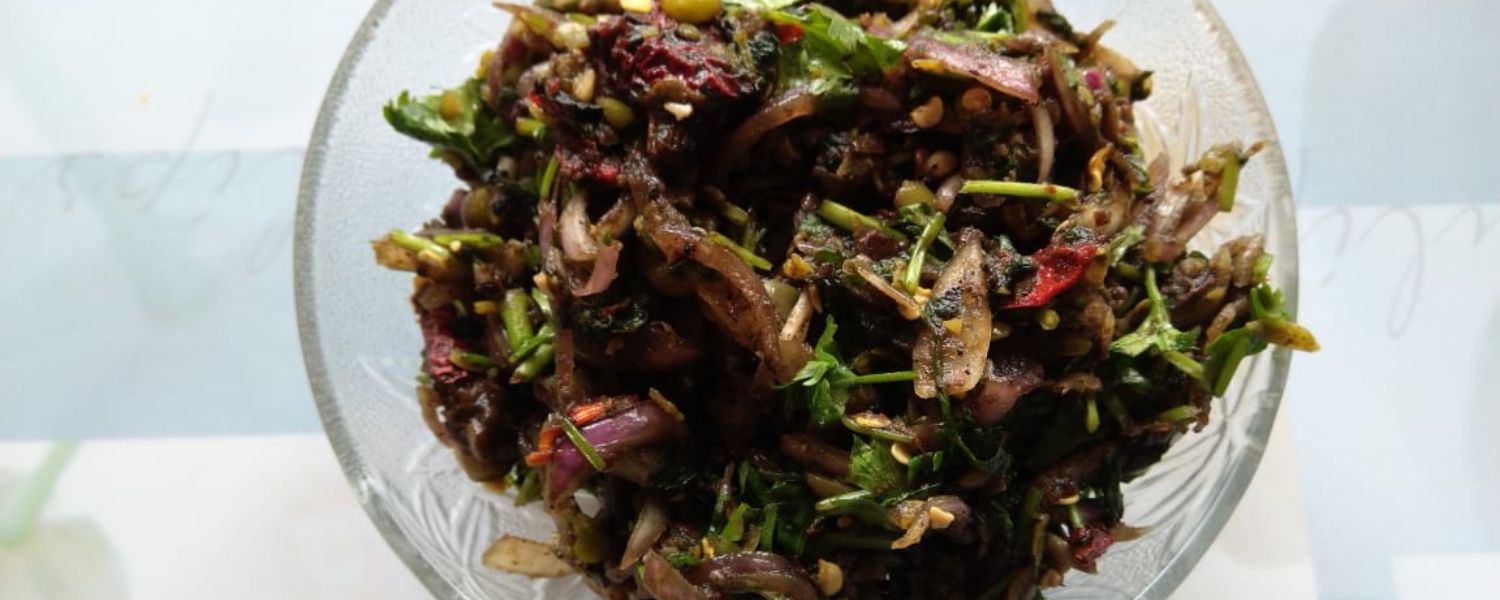
Morok Metpa is a beloved culinary gem hailing from the vibrant land of Manipur, known for its rich cultural tapestry and diverse cuisine.
People cherish this delightful dish in Manipuri gastronomy for its unique flavors and simplicity.
Cooks primarily make Morok Metpa from fiery green chilies, garlic, and salt, pounding them together to create a zesty paste.
Its bold and piquant taste adds flavor to any meal, making it a popular accompaniment across the region.
Whether served alongside steamed rice or as a condiment to enhance other dishes, Morok Metpa never fails to tantalize the taste buds.
Its preparation requires minimal ingredients and effort, yet it leaves a lasting impression with its fiery kick and irresistible aroma.
Morok Metpa encapsulates Manipuri cuisine’s essence – bold, flavorful, and deeply rooted in tradition.
13. Iromba
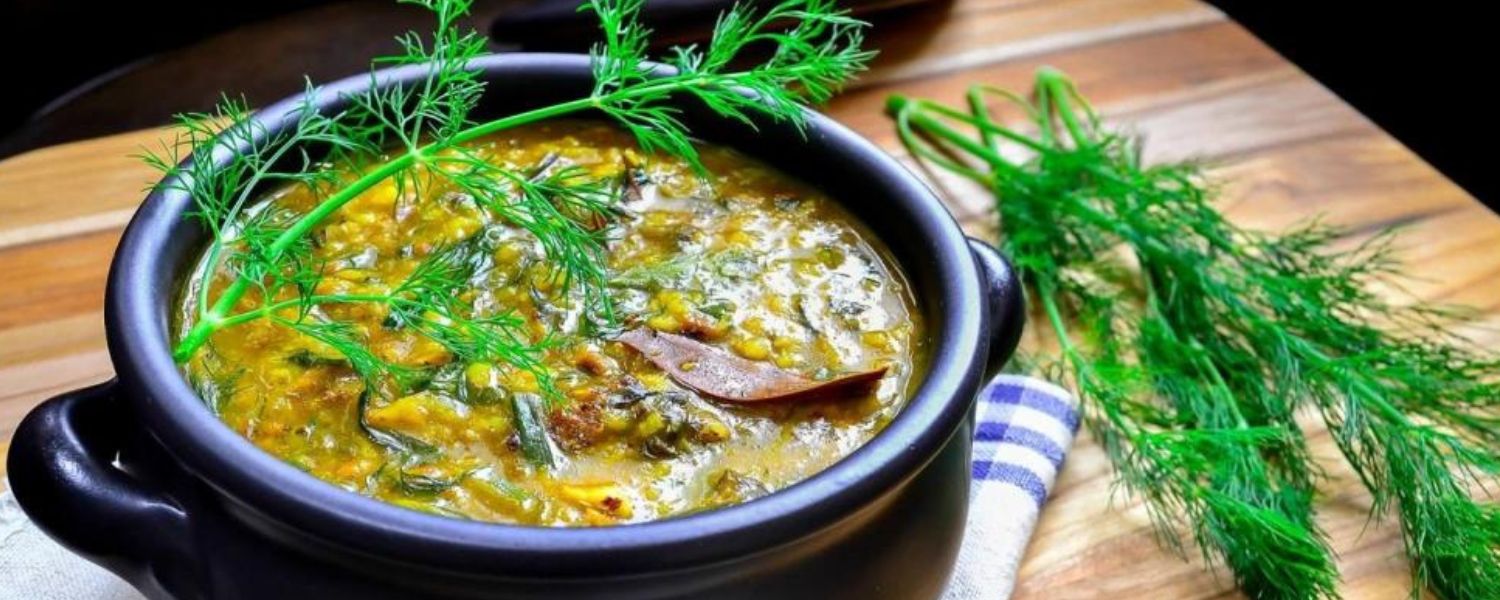
In the northeastern state of Manipur, India, lies a culinary gem, Iromba. In Manipuri cuisine, people revere this traditional dish for its unique blend of flavors and textures.
Iromba typically consists of mashed boiled vegetables like potatoes, yam, and pumpkin mixed with fermented fish called ngari, green chilies, ginger, garlic, and aromatic herbs.
Then, they season the mixture with salt and sometimes garnish it with fresh coriander leaves.
Iromba’s harmonious balance of savory, spicy, and tangy notes makes it unique, creating a burst of flavor with every bite.
The fermentation process of the fish adds depth and complexity to the dish, while the combination of vegetables lends it a hearty and wholesome character.
Whether enjoyed as a side dish or a main course, Iromba offers a delightful culinary experience showcasing Manipur’s rich culinary heritage.
For those seeking an authentic taste of Manipuri cuisine, Iromba is a must-try delicacy that promises to tantalize the taste sides and leave a lasting impression.
14. Kangsoi

Kangsoi is one of the most renowned dishes hailing from the vibrant state of Manipur, nestled in the northeastern part of India.
This traditional Manipuri cuisine is a flavorful stew that captivates with its simplicity and depth of taste.
Made with an assortment of seasonal vegetables and sometimes with a choice of meat or fish, Kangsoi embodies the essence of Manipuri’s culinary heritage.
Chefs typically prepare the dish by boiling the ingredients with minimal spices, allowing the natural flavors to shine.
What sets Kangsoi apart is its wholesome and nutritious appeal, making it a staple in Manipuri households for generations.
Its versatility allows for variations in ingredients based on availability and personal preferences, ensuring a delightful dining experience for all.
Whether enjoyed as a comforting family meal or served at festive gatherings, Kangsoi continues to charm locals and tourists with its authentic flavors and cultural significance in Manipur’s culinary landscape.
15. Chagem Pomba
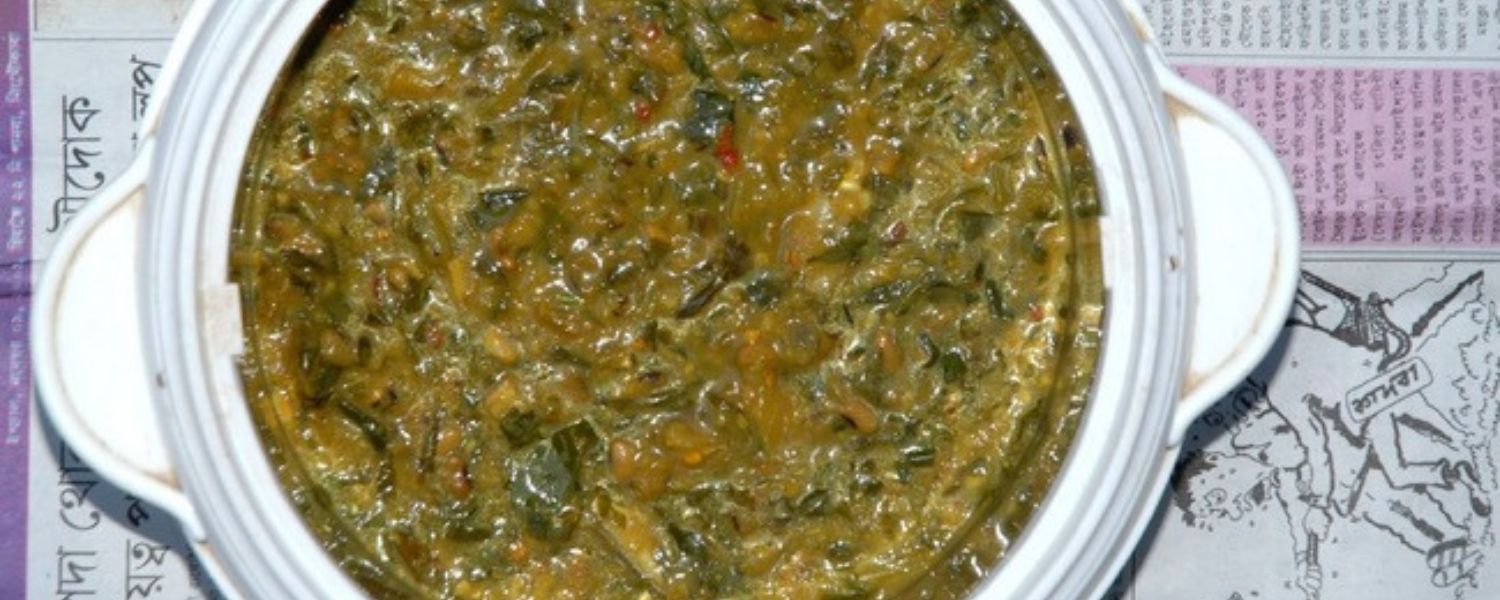
Chagem Pomba is a delightful and renowned dish hailing from the vibrant state of Manipur, India, often celebrated as one of the region’s famous foods.
This traditional favorite food of Manipur is a mouthwatering concoction featuring fermented bamboo shoots and fish cooked to perfection with a mixture of aromatic spices and herbs.
The dishes’ flavors burst in your mouth, as the tangy taste of bamboo shoots perfectly complements the flavor of the fish.
The preparation of Chagem Pomba involves meticulous attention to detail, as the balance of flavors is crucial to its authentic taste.
Typically, cooks simmer the dish, allowing the ingredients to meld together, resulting in a savory and aromatic curry.
People frequently consume steamed rice, providing a complete and satisfying gastronomic experience.
Chagem Pomba not only satisfies the appetite but also reflects the cultural heritage of the famous food of Manipur through its unique flavors and preparation methods, making it a must-try for anyone exploring the diverse cuisine of India’s northeastern region.
16. Morok Kanghou
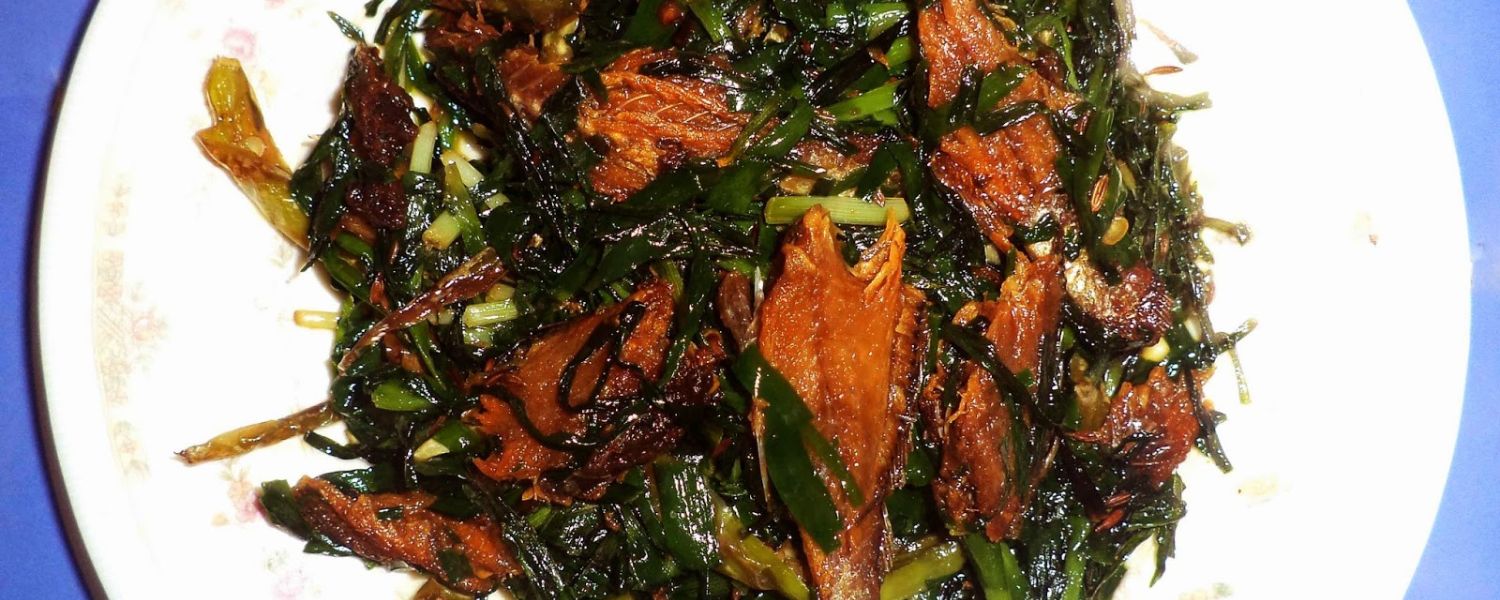
Morok Kanghou is a delectable dish that hails from the northeastern state of Manipur in India, renowned for its rich culinary heritage.
Locals and visitors alike cherish this dish as one of the most famous foods of Manipur.
Morok Kanghou features a delightful blend of flavors, primarily comprising smoked or roasted green chilies (more in Manipuri) and ngari (fermented fish).
To enhance their smoky aroma, chefs carefully char or smoke the green chilies before mixing them with ngari, resulting in a savory and piquant delicacy.
Restaurants often serve the dish as a side dish or condiment, accompanying famous staple foods of Manipur, like rice or tasty snacks.
Its fiery yet addictive taste tantalizes the taste buds, making it a favorite among spice enthusiasts.
Morok Kanghou encapsulates the essence of Manipuri cuisine, reflecting the region’s love for bold flavors and traditional cooking techniques.
Conclusion
In conclusion, the famous food of Manipur presents a delectable journey through the region’s rich culinary heritage.
With a blend of diverse influences ranging from neighboring states to indigenous traditions, Manipuri cuisine offers a unique gastronomic experience.
From the savory flavors of Kangsoi and Chamthong to the fiery kick of Eromba and the irresistible aroma of Chak-hao kheer, each dish embodies the essence of the famous food of Manipur culture and history.
Using locally sourced ingredients like bamboo shoots, fish, and aromatic herbs enhances the taste and reflects the harmony between nature and the famous food of Manipur.
Whether enjoyed during festive celebrations or everyday meals, these iconic dishes showcase the culinary prowess of the renowned food of the Manipur people, inviting food enthusiasts from around the world to savor the distinct flavors of this enchanting land.
Exploring the majestic Manipur historical monuments unveils the rich heritage and cultural legacy of this captivating region.
Embracing tradition while embracing innovation, the famous food of Manipur continues to captivate palates and hearts alike, leaving a mark on the global culinary scene.
FAQ
Q: What are some famous dishes from Manipur?
Ans: Manipur boasts a rich culinary tradition, with its famous dishes reflecting the state’s diverse culture. Some renowned delicacies include Eromba, a spicy stew made with boiled vegetables and fermented fish, and Kangshoi, a hearty vegetable stew typically served with rice.
Q: Are there any unique ingredients used in Manipuri cuisine?
Ans: Yes, Manipuri cuisine often incorporates indigenous ingredients like bamboo shoots, lotus stems, and various aromatic herbs and spices. These ingredients lend distinctive flavors and showcase the region’s bountiful natural resources.
Q: Can you tell us about the iconic snack from Manipur?
Ans: Absolutely! One cannot miss out on Singju, a refreshing salad made with finely chopped vegetables, herbs, and roasted grams, dressed with a tangy and spicy sauce. Singju perfectly captures the vibrant and refreshing flavors of Manipuri cuisine.
Q: Is Manipuri food suitable for vegetarians?
Ans: Yes, Manipuri cuisine offers a plethora of vegetarian options, including dishes like Chamthong (a clear vegetable soup) and Ngari (fermented soybean curry), ensuring a delightful culinary experience for vegetarians as well.
Q: Where can I try the authentic, famous food of Manipur?
Ans: You can savor authentic, famous Manipur food in traditional eateries across the region, especially in local markets and restaurants in cities like Imphal. These establishments offer an immersive dining experience, allowing visitors to savor the true essence of Manipur’s famous food.
